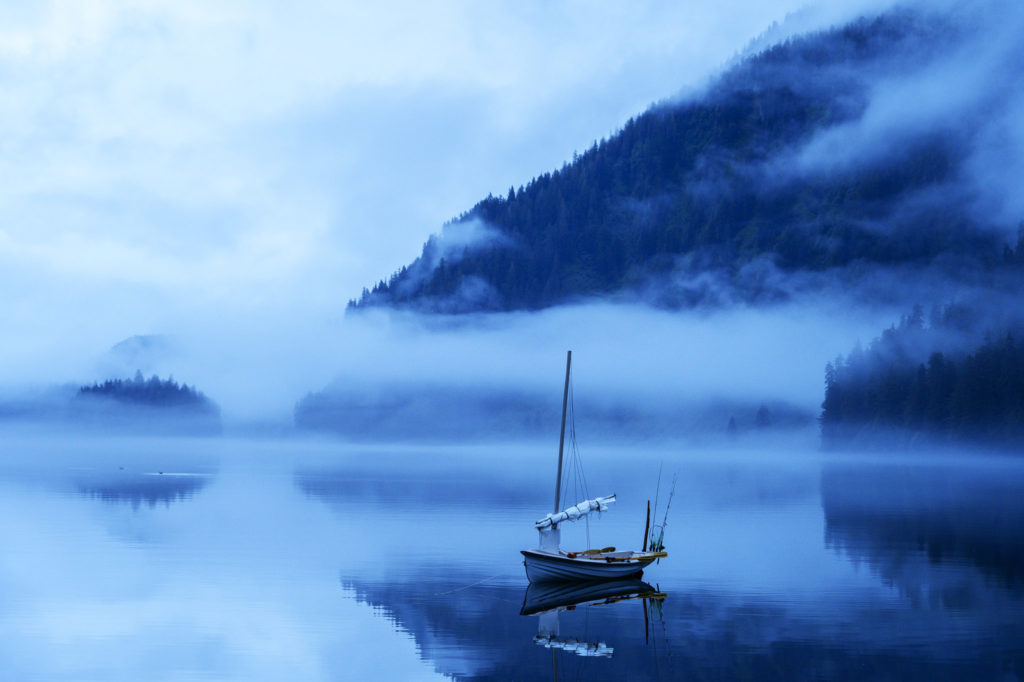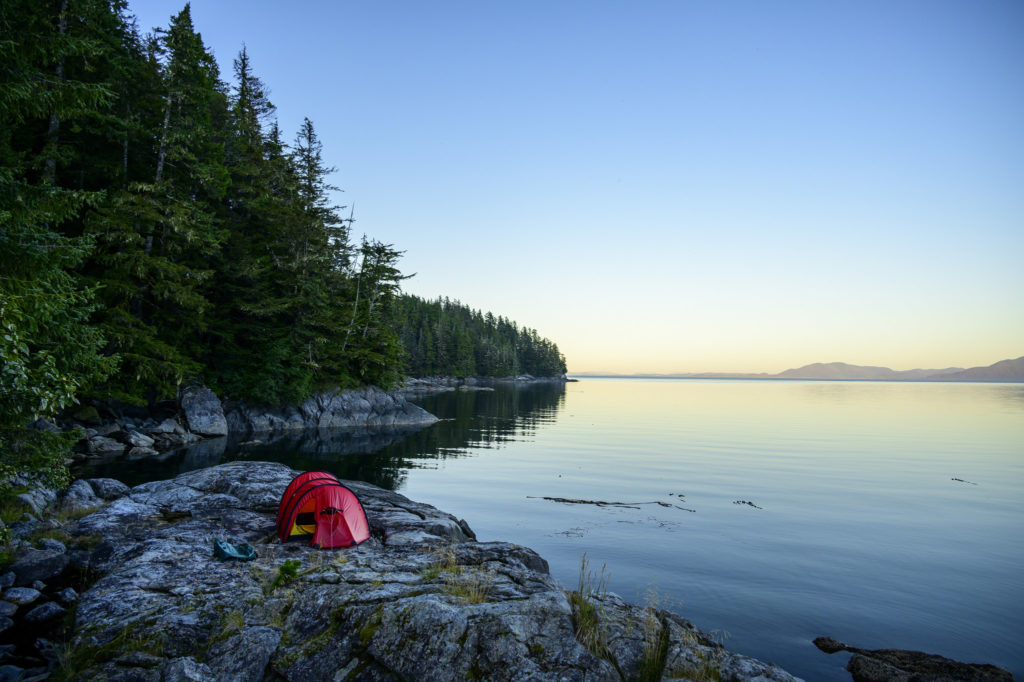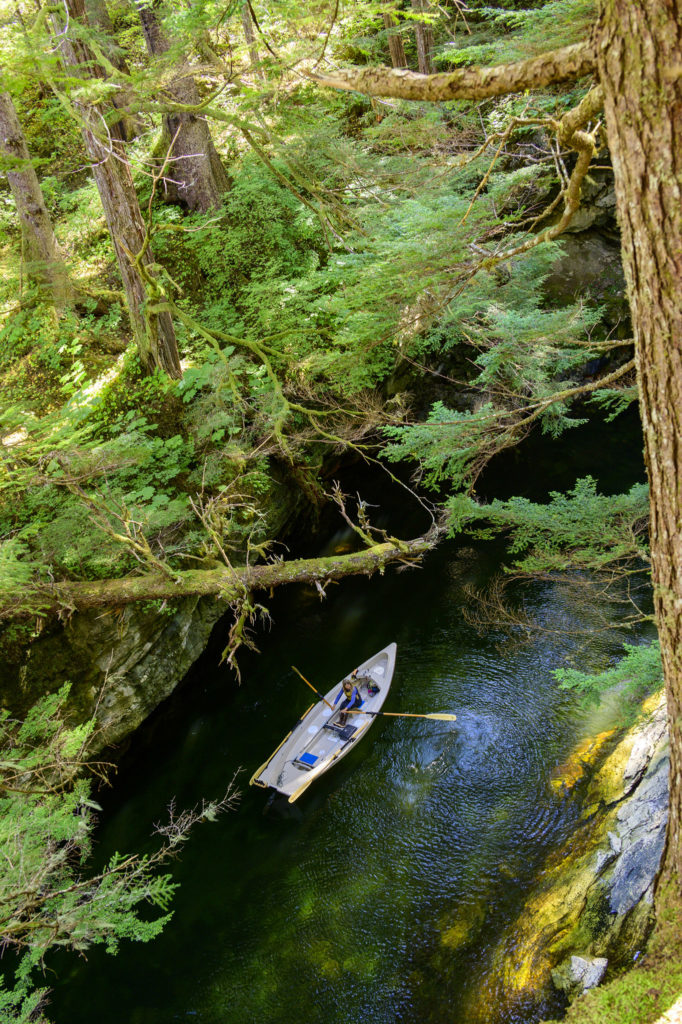
By Kate Calamusa
Feature Photography by Fredrik Norrsell
What would it be like to live a year in the wild?
This was the intriguing idea that Fredrik Norrsell and Nancy Pfeiffer sought to answer when they set off in June 2021 on what would become a 15-month-long expedition through the spectacular southeastern Alaskan wilds.
“We really hoped to immerse ourselves in nature, all the while consuming little other than what the immediate area had to offer, and to live lightly on the planet,” says Pfeiffer of the journey. Adds Norrsell: “And, in order to deeply experience these places, we wanted to go slowly, take our time, and travel in a way we could really connect with the surroundings.”
Longtime campers and experienced kayakers, the couple were not novices when it came to adventure travel nor outdoors exposure. The pair, who reside in Palmer in south-central Alaska, kayaked 680 miles of Alaskan coastline in the summer of 2016. Both have also acted as wilderness guides and worked extensively in avalanche safety. Still, they knew a journey of this magnitude would require a vessel with a little more heft, and a lot more storage space, than their usual pair of kayaks could provide.
Enter Wild Places, a 17-foot sailboat designed and built by Gig Harbor Boat Works specifically for long-range sailing expeditions. The couple was first introduced to the Washington-based boat builder back in 2019 on the recommendation of a friend, who had also done some small boat sailing. The pair tested one of the company’s other skiffs while visiting family in the lower 48. After their test run, they got to chatting with the Gig Harbor Boat Works team about their hoped-for expedition and Production Manager Falk Bock mentioned that there was a new boat under development to fit their needs.
The Salish Voyager, then in prototype stage, was crafted with sailing and rowing in mind, with the lug rig’s mast location moved forward to open up the interior to create a long footwell for either single or tandem sliding seats. The new boat also featured enclosed storage wells for increased utility and a self-bailing floor. The hull was based on the company’s fast, forgiving, and capable Jersey skiff design, making it a nimble little craft. “The idea of being able to row or sail with this boat was very appealing to us,” says Pfeiffer. “The Voyager was small enough and light enough to get into smaller bays or inlets, but also would give us more storage than our kayaks ever could. Plus having the opportunity to sail at times could give our bodies a break since we use our whole body when rowing.”
The rest, as they say, is history; the pair purchased the first available Voyager to emerge from the boatyard. By November 2020, Gig Harbor Boat Works had her packed and on her way to the pair’s departure point of Haines, Alaska. A series of pandemic-induced travel delays prevented Norrsell and Pfeiffer from even reaching their boat in Haines until June of 2021, when they arrived with their car packed with provisions and proceeded to figure out how to then pack it all in Wild Places. It proved to be one of the more daunting moments of the entire trip, they reflected afterwards. Pfeiffer says, “It caught us a little off-guard, not seeing the boat ahead of time and having to make outfitting adjustments on the fly. In Alaska, marine supplies are hard to find, especially at a moment’s notice.” Norrsell added with a rueful laugh: “In hindsight, I would have packed more rope for anchoring.”
But, outside of perhaps those extra coils of rope, the two state that there’s not much else they would do differently about the journey. Though they had destinations they hoped to visit—and did end up taking in such highlights as the pristine waters of Glacier Bay, the limestone cliffs of Chichagof Island, and the granite fjords of Baranof Island—the couple didn’t have much of a pre-planned schedule, instead letting nature dictate their timing.
“We’ve worked in the outdoors so long that we’ve gotten pretty comfortable with making decisions in the moment,” says Pfeiffer. “And for this journey, it was part of what kept us safe. We didn’t have to be at a certain destination at a certain time. We could stop and ride out the weather in a protected bay. Or, we realized pretty quickly it wasn’t worth our time trying to beat against headwinds. We’d just turn around and instead enjoy a nice tailwind.”
The duo switched back and forth between human and wind power as they traveled along the shoreline. As they got their sea legs under them and learned to rig the sails quickly while underway, they sometimes switched between rowing and sailing several times a day. Outside of learning the ins and outs of sailing, another daunting feat they tackled was learning to deal with plus 20-foot tidal changes and figuring where to leave the boat at night, when they came ashore to make camp, to ensure it wasn’t left dry on a beach when they were ready to set off again come morning.

Supplementing the grocery supplies they would pick up in the little hamlets they found along the way, the pair ate well around the campfire. They fished and dropped pots off the back of Wild Places to catch fresh salmon, crab, and shrimp, a further connection to the awe-inspiring nature that enveloped them.
Norrsell, who is also a photographer (find more of his snaps at norrsell.com), snapped stunning photos not only of the topography but of the wildlife they came in contact with—everything from sea otters and humpback whales to bears and birds.
“I think that was the most impactful thing for me on this trip, with this vessel: The amazing ability to slide alongside the shoreline, sometimes just from an oars-length away, and take in the amazing amount of wildlife and tide life present,” he says. “It’s the biggest difference between traveling this way versus on a bigger boat; taking photos I was eye level with the animals. And it’s so quiet that you could actually hear the wildlife before you ever saw them. We’d often spot seals popping their heads up in our wake after we would glide by.”
They did run into human life as well, with other boaters often marveling at their nimble craft and their intrepid natures. The twosome did always get a chuckle over the two most commonly asked questions from the people they met: “Where’s your boat?” This one would be posed after folks heard they had come from Haines and would assume they were in their dinghy. The pair would then always insist, “This is our boat.” And the other, “Where’s your motor?” In answer to that, Fredrik would always just point to Nancy.
At the conclusion of their first stunning summer, the couple wintered on Baranof Island. They acted as caretakers of the lodge there, all the while taking Wild Places out to explore the bay most days. “Staying in one place for a while was equally powerful in its own way,” states Pfeiffer. “We got to chronicle the changing of the seasons, notice the frequency of the whales coming by, and even started recognizing the individual bears as they would come down to fish in the waters.”
Once they spotted the migrating humpbacks and hummingbirds in the spring of 2022, the pair set off again, traveling several hundred miles further south before swinging back north to Haines, taking in another glorious Alaskan summer before docking the boat in late August. A published author of the book Riding Into the Heart of Patagonia, Pfeiffer chronicled their entire journey, which logged in at over 1,500 nautical miles, via a blog on the Gig Harbor Boat Works website and wrote at its culmination: “A small greeting party met us on the beach outside Haines. Sitting in the sun, looking at what I still considered the most beautiful scenery of the trip, it was hard to believe that this journey, which had become a way of life, was actually over.”
It was undoubtedly an unforgettable expedition and one that the pair says reminded them of the importance of living simply and living communally with nature. “We learned once again to go with the flow, and take it slow,” says Pfeiffer. Adds Norrsell: “And to live simply and to appreciate deeply. Doing so gives you so much freedom and time. You really can do what your heart desires.”
>> Read more about the couple’s journey aboard Wild Places via the Gig Harbor Boat Works’ blog at: ghboats.com/category/our-boats/salish-voyager/. Also be on the lookout for the couple’s forthcoming book, Going Wild, which will feature stories, photos, and recipes from a summer of kayaking and living off the land and sea.
